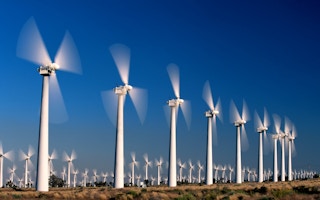‘There is no Plan B, there is no miracle’. French climate change ambassador Laurence Tubiana’s reminder to national delegates, midway through a fraught final negotiating session before the Paris climate summit, deserves some attention. Climate diplomacy can deliver progress but it is not in the miracle business.
To continue reading, subscribe to Eco‑Business.
There's something for everyone. We offer a range of subscription plans.
- Access our stories and receive our Insights Weekly newsletter with the free EB Member plan.
- Unlock unlimited access to our content and archive with EB Circle.
- Publish your content with EB Premium.
The October session of the UN Framework Convention on Climate Change (UNFCCC) talks left most difficult decisions on the table, including in the vital area of technology development and transfer. However, new reports on both national climate action plans and the UNFCCC’s technology initiatives illustrate substantial momentum for action that the Paris deal can build upon.
Bonn talks dogged by reiteration of party positions, recriminations
The weeklong UNFCCC negotiating in October in Bonn was the final opportunity for diplomats to settle on a draft agreement text for ministers to consider in Paris. The session (summarized in IISD’s comprehensive report) began with widespread objections to a draft prepared by the negotiation’s co-chairs, which streamlined previous drafts. At the insistence of the G77 and China group and other parties, a work-plan for parties to make ‘surgical additions’ and negotiate the text was abandoned.
Instead, the negotiation reverted to the insertion by parties of large portions of favored text back into the draft. Spin-off groups on different topics (e.g. mitigation, finance and adaptation) worked to clarify options, with parties too often restating existing positions rather than engaging with each others’ proposals. The negotiation was also held up by running recriminations over process. Ultimately, the session resulted in a much-expanded draft agreement.
The competing options of the draft article on technology development and transfer reflect the fault-lines of the overall negotiation, including climate finance and the nature and degree of differentiated responsibilities between developed and developing countries.
For example, India reinserted a paragraph that would require developed countries to provide finance to address ‘barriers’ created by intellectual property rights, including through the Green Climate Fund.
Other matters that must wait to be resolved at Paris include whether there will be a ‘global goal’ on technology, whether the existing UN Technology Mechanism will be retained and perhaps strengthened and whether parties will be called upon to improve domestic enabling environments for climate technology.
INDCs show progress, challenge negotiators
On Friday the UNFCCC secretariat released its synthesis report of intended national determined contributions (INDCs). INDCs are pledges of post-2020 climate action submitted to the UNFCCC by governments. Coming a week after the conclusion of the Bonn talks, the report disclosed significant – thought inadequate – progress on planning to prevent dangerous climate change.
Compared to pre-2020 policies, in the INDCs the number of countries accepting absolute, business-as-usual, intensity or peaking-year quantified emissions targets more than doubled to 127. UNFCCC executive secretary Christiana Figueres said that the INDCs ‘have the capability of limiting the forecast temperature rise to around 2.7 degrees Celsius by 2100, by no means enough but a lot lower than the estimated four, five, or more degrees of warming projected by many prior to the INDCs’.
Climate technology features prominently in the synthesis report. Both renewable energy and energy efficiency were highlighted in ‘many’ INDCs. Renewables actions included feed-in tariffs, investment programmes and grid infrastructure upgrades. Energy efficiency actions included smart grids and energy conservation standards. ‘A few’ countries opted to include quantified renewable energy targets.
The increased ambition within INDCs is a challenge to negotiators crafting the Paris deal, with many parties calling for enhanced cooperation to enable them to implement their INDCs. In the report, the UNFCCC notes that it provides the framework for ‘delivering the necessary support to Parties for implementing their INDCs and could enhance its catalytic role in this regard’, including through the Technology Mechanism.
The Technology Mechanism was established in 2010 in order to facilitate technology development and transfer in support of climate change mitigation and adaptation. The Technology Mechanism has a ‘policy arm’, the Technology Executive Committee, and an ‘implementation arm’, the Climate Technology Centre and Network (CTCN), which provides technical assistance to developing countries.
In its recommendations to the negotiators at Paris, the Technology Executive Committee calls on countries to develop strong enabling environments, including clear legal frameworks, to facilitate technology finance and investment.
The CTCN is an interesting mechanism for enabling climate technology uptake. As a young institution encompassing both public and private institutions, it is an example of the greater use of networks in contemporary diplomacy.
The Technology Mechanism’s annual report shows that, since becoming fully operational in December 2013, the CTCN has engaged with fifty requests for technical assistance from thirty developing countries, including a number of multi-country requests. The requests, covering both climate mitigation and adaptation, relate to technology needs in a broad range of sectors, including energy, transport and agriculture.
Paris to determine climate technology support
Ultimately, the negotiators at Paris will have to determine the shape and ambition of support for technology development and transfer under the climate convention. The role of existing institutions, including the network-centric CTCN, will be considered.
The Paris conference will be the culmination of a multi-year process well captured by Max Weber’s description of politics as ‘a strong and slow boring of hard boards’. It’s not cited as often, but Weber went on to observe that politics ‘requires passion as well as perspective’. If the passion is not in doubt, the perspective to achieve meaningful progress on climate action, including technology development and transfer, will continue to be tested.
Stephen Minas is a research fellow at the Transnational Law Institute, King’s College London. This piece was written exclusively for Eco-Business.


















